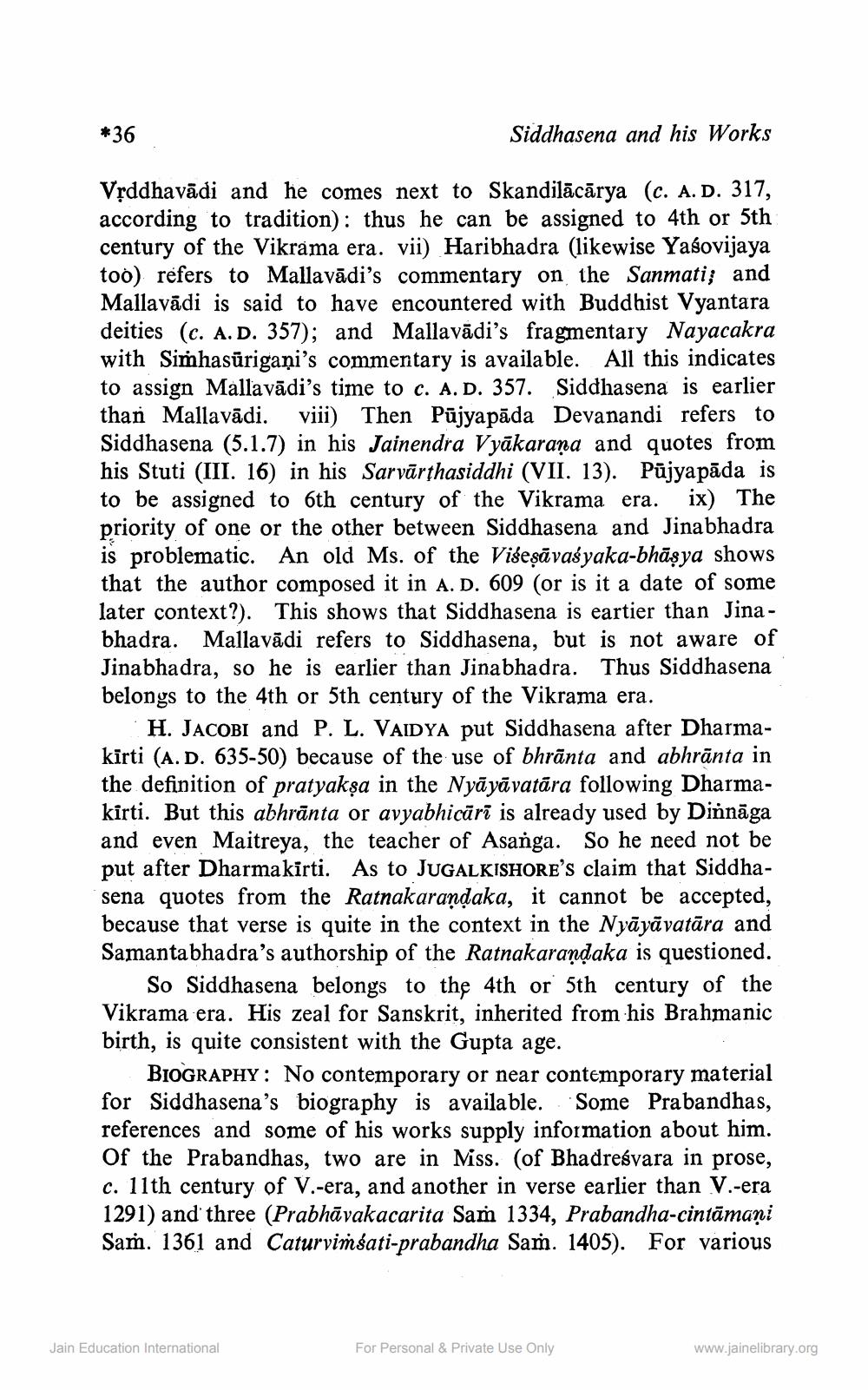________________
*36
Siddhasena and his Works
Vțddhavādi and he comes next to Skandilācārya (c. A. D. 317, according to tradition): thus he can be assigned to 4th or 5th century of the Vikrama era. vii) Haribhadra (likewise Yasovijaya too) refers to Mallavādi's commentary on the Sanmati; and Mallavādi is said to have encountered with Buddhist Vyantara deities (c. A.D. 357); and Mallavādi's fragmentary Nayacakra with Simhasūrigaņi's commentary is available. All this indicates to assign Mallavādi's time to c. A. D. 357. Siddhasena is earlier than Mallavādi. viii) Then Pūjyapāda Devanandi refers to Siddhasena (5.1.7) in his Jainendra Vyākarana and quotes from his Stuti (III. 16) in his Sarvārthasiddhi (VII. 13). Pūjyapāda is to be assigned to 6th century of the Vikrama era. ix) The priority of one or the other between Siddhasena and Jinabhadra is problematic. An old Ms. of the Viseșāvaśyaka-bhāsya shows that the author composed it in A. D. 609 (or is it a date of some later context?). This shows that Siddhasena is eartier than Jinabhadra. Mallavādi refers to Siddhasena, but is not aware of Jinabhadra, so he is earlier than Jinabhadra. Thus Siddhasena belongs to the 4th or 5th century of the Vikrama era.
H. JACOBI and P. L. VAIDYA put Siddhasena after Dharmakīrti (A. D. 635-50) because of the use of bhrānta and abhrānta in the definition of pratyaksa in the Nyāyāvatāra following Dharmakirti. But this abhrānta or avyabhicūrī is already used by Dinnāga and even Maitreya, the teacher of Asanga. So he need not be put after Dharmakirti. As to JUGALKISHORE's claim that Siddhasena quotes from the Ratnakarandaka, it cannot be accepted, because that verse is quite in the context in the Nyāyāvatāra and Samantabhadra's authorship of the Ratnakarandaka is questioned.
So Siddhasena belongs to the 4th or 5th century of the Vikrama era. His zeal for Sanskrit, inherited from his Brahmanic birth, is quite consistent with the Gupta age.
BIOGRAPHY: No contemporary or near contemporary material for Siddhasena's biography is available. Some Prabandhas, references and some of his works supply information about him. Of the Prabandhas, two are in Miss. (of Bhadreśvara in prose, c. 11th century of V.-era, and another in verse earlier than V.-era 1291) and three (Prabhāvakacarita Sam 1334, Prabandha-cintāmaņi Sam. 1361 and Caturvimšati-prabandha Sam. 1405). For various
Jain Education International
For Personal & Private Use Only
www.jainelibrary.org




